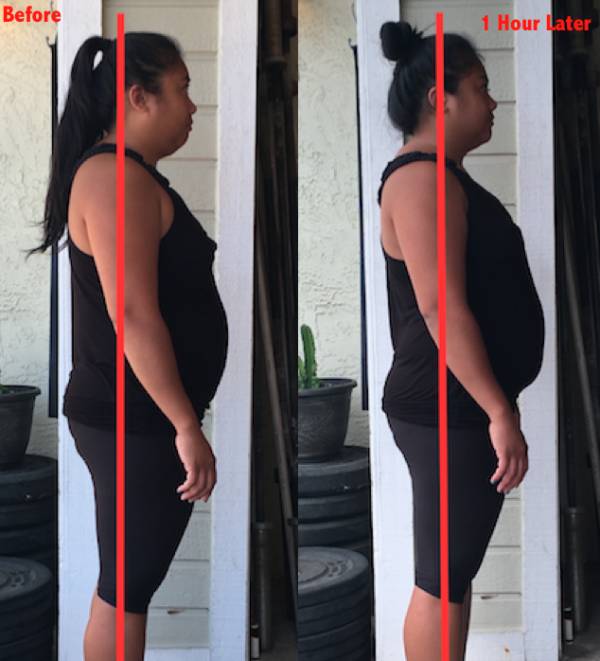The temporomandibular (tem-puh-roe-mun-DIB-u-lur) joint (TMJ) attaches the lower jaw to the skull. TMJ syndrome is a disorder that is characterized by pain in the jaw joint and in the muscles that control jaw movement. For the sake of this article, TMJ syndrome will be referred to as simply TMJ.
Typical symptoms of TMJ include pain in the face, jaw, neck, and around the ear, and locking, clicking, and grinding of the joint. Common forms of treatment include anti-inflammatory drugs, muscle relaxers, cortisone injections, mouth and bite guards, reconstructive surgery of the jaw, or even joint replacement. Unfortunately, many of these forms of treatment offer only short-term relief, and in many cases, can be costly.
A Case Study in TMJ Treatment
When Aurena came to me over the summer of last year, she was suffering from a slew of maladies, the most severe being TMJ pain. When she showed me how bad her TMJ really was, she opened her mouth, and I was shocked when I saw that her jaw moved off to the side, not straight down like most normal jaws should.
When it comes to effectively treating TMJ, it is important to look beyond the jaw joint itself and take into account some of the underlying factors that caused the problem to occur in the first place.
When we sit and don’t move enough, the spine can get stuck in a rounded-forward position. This brings the head out of its natural, vertical alignment. Ideally, the head is supposed to be dynamically linked to and supported by the shoulders, hips, knees, and ankles. Function Freddie shows us how the human body is supposed to look, below.
When the body loses this vertical alignment, the muscles of the upper back, neck, and jaw become locked up from straining to hold the head as it comes forward. Lateral and rotational movement of the neck and head become limited, and the jaw loses its ability to smoothly open and close.
Due to the dysfunction in her jaw, Aurena was limited in her ability to chew food normally, and was confined to eating mostly liquids and soft foods that didn’t require chewing. She had been to a dentist and a chiropractor to treat her symptoms, but she still had the same persistent problem with her jaw. By the time she came to see me, she was fed up with all of this, and ready to make a permanent change.
Fix the Body to Relieve the Jaw
Upon assessing Aurena’s posture, it was no surprise that her head was about four inches forward of the plumb line from the side view. Correct anatomical alignment is where the ear lobe aligns directly above the shoulder joint from the side view, as shown by Function Freddie above.
We got right to work at correcting the position of Aurena’s head, along with her shoulders, hips, knees and ankles. Yes, we took a full body approach to fix a problem that manifested in her jaw. Within one hour, we made this progress in the position of her head:

Aurena went on to practice her posture exercises every day at home, with periodic checkups with me every two weeks in order to re-assess her posture and make adjustments to her exercise routine. Within three months, Aurena had made significant improvements to her posture, and the end result was she was able to open and close her jaw without the significant offset that was there before. She was ecstatic at the fact that she has made this progress all on her own, without having to rely on drugs or surgery! Today, Aurena keeps up with her exercises and maintains her results on her own.
Get Relief Now
If you are suffering from TMJ, you may have never considered posture as the culprit behind your problem. Now that posture is on your radar, consider the following options as next steps in finding a permanent solution to your problem:
- To learn more about how posture causes TMJ and to find simple exercises that you can begin practicing right away to get relief, check out Pete Egoscue’s Pain Free.
- Look up a posture alignment specialist in your area that can get you started on a customized program to help you heal your jaw.
I hope you found this information to be useful. If you do not suffer from TMJ, but you know of someone who does, please forward this article to them.
Disclaimer: This article is for informational purposes only. The purpose of this article is to promote broader understanding and knowledge of various health topics. It is not intended to be a substitute for professional medical advice, diagnosis, or treatment. Always seek the advice of your physician or other qualified health care provider with any questions you may have regarding a medical condition or treatment and before undertaking a new health care regimen, and never disregard professional medical advice or delay in seeking it because of something you have seen in this article.






